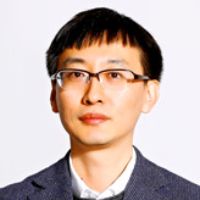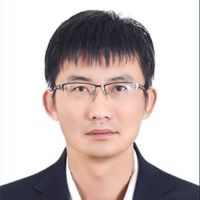Optical Quantum System
A special issue of Photonics (ISSN 2304-6732). This special issue belongs to the section "Quantum Photonics and Technologies".
Deadline for manuscript submissions: closed (15 December 2024) | Viewed by 19936
Special Issue Editors
Interests: quantum optical measurement; quantum cryptography; nonlinear optics and its applications; single photon detection and imaging; high-order coherence; quantum optics
Interests: preparation, detection, and field manipulation of ultra-cooled molecules; high sensitivity spectroscopy of atoms and molecules; quantum simulation; quantum optics; micro-nano fiber optics
Interests: quantum information processing; optical secure communication; quantum cryptography; high-speed key generation and its application; optical precision measurement
Special Issue Information
Dear Colleagues,
Optical quantum systems have attracted considerable attention and become one of the most active research areas in quantum science and technology. These systems open new avenues for realizing various quantum science tasks, such as quantum precision measurement, quantum communication, quantum information processing, quantum simulation, quantum sensing, quantum imaging, and quantum computing. Novel advances in optoelectronic materials, integrated technologies, precision measurement, and information science boost the rapid development of optical quantum system. The exciting applications and rich emerging technologies based on optical quantum systems will shape the new area of quantum optics in the future.
This Special Issue aims to present reviews and cutting-edge research articles on the latest advances and potential applications of “Optical Quantum Systems” and related research fields, including but not limited to:
- Quantum precision measurement and sensing;
- Quantum imaging and interference measurement;
- Production and manipulation of ultracold atoms and molecules;
- Precise spectroscopy measurement of atoms and molecules;
- Optical quantum cryptography and integrated quantum devices;
- Quantum simulation and computation with cold particle array;
- Single-atomic and molecular optical and nanophotonic systems;
- Quantum information processing and quantum communication.
Prof. Dr. Yanqiang Guo
Prof. Dr. Yanting Zhao
Dr. Xiaomin Guo
Guest Editors
Manuscript Submission Information
Manuscripts should be submitted online at www.mdpi.com by registering and logging in to this website. Once you are registered, click here to go to the submission form. Manuscripts can be submitted until the deadline. All submissions that pass pre-check are peer-reviewed. Accepted papers will be published continuously in the journal (as soon as accepted) and will be listed together on the special issue website. Research articles, review articles as well as short communications are invited. For planned papers, a title and short abstract (about 100 words) can be sent to the Editorial Office for announcement on this website.
Submitted manuscripts should not have been published previously, nor be under consideration for publication elsewhere (except conference proceedings papers). All manuscripts are thoroughly refereed through a single-blind peer-review process. A guide for authors and other relevant information for submission of manuscripts is available on the Instructions for Authors page. Photonics is an international peer-reviewed open access monthly journal published by MDPI.
Please visit the Instructions for Authors page before submitting a manuscript. The Article Processing Charge (APC) for publication in this open access journal is 2400 CHF (Swiss Francs). Submitted papers should be well formatted and use good English. Authors may use MDPI's English editing service prior to publication or during author revisions.
Keywords
- precise measurement
- quantum coherence
- photon interference
- quantum cryptography
- quantum manipulation of atoms and molecules
- ultracold atoms and molecules
- quantum simulation
- integrated photonics
- nonlinear optics
- quantum communication
Benefits of Publishing in a Special Issue
- Ease of navigation: Grouping papers by topic helps scholars navigate broad scope journals more efficiently.
- Greater discoverability: Special Issues support the reach and impact of scientific research. Articles in Special Issues are more discoverable and cited more frequently.
- Expansion of research network: Special Issues facilitate connections among authors, fostering scientific collaborations.
- External promotion: Articles in Special Issues are often promoted through the journal's social media, increasing their visibility.
- Reprint: MDPI Books provides the opportunity to republish successful Special Issues in book format, both online and in print.
Further information on MDPI's Special Issue policies can be found here.







